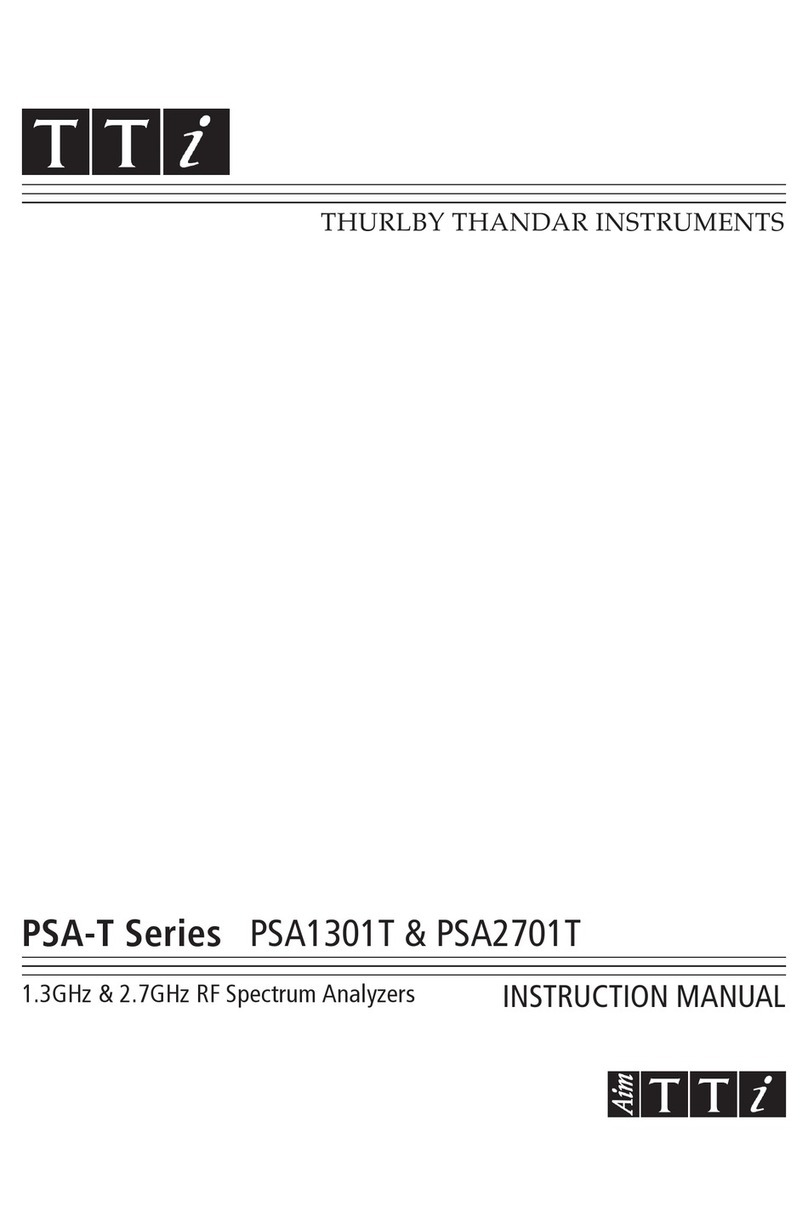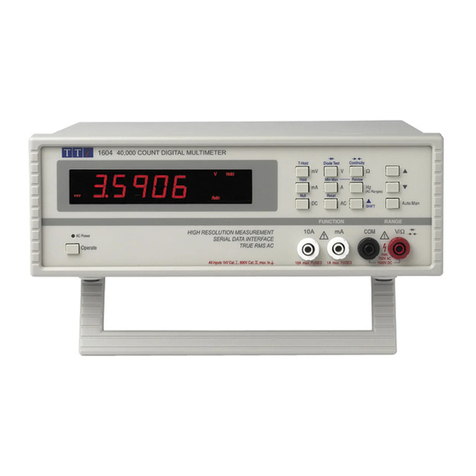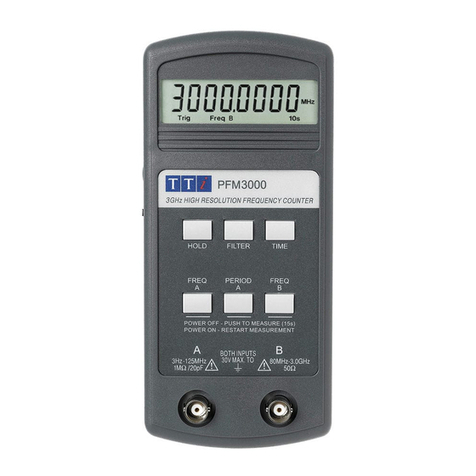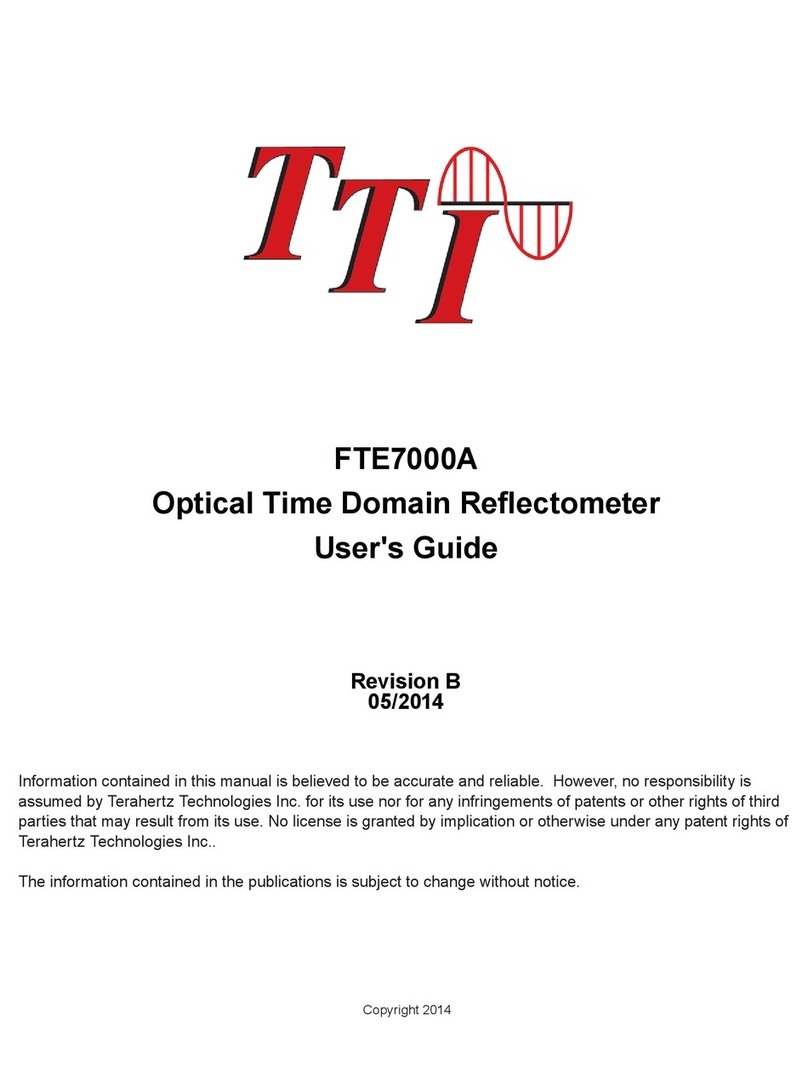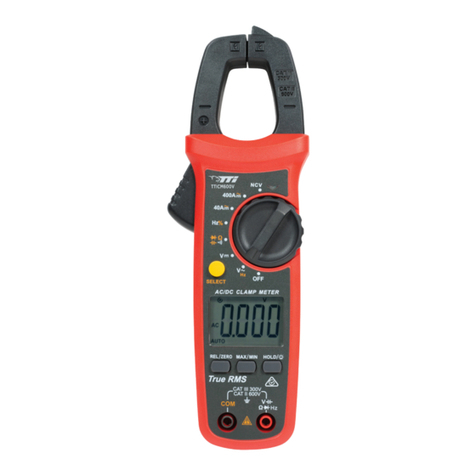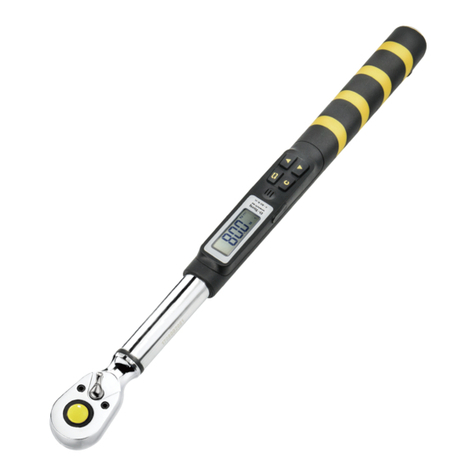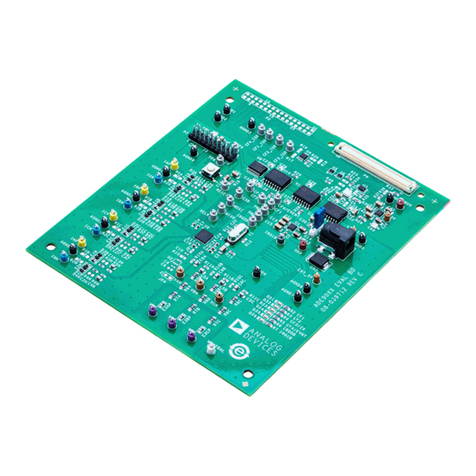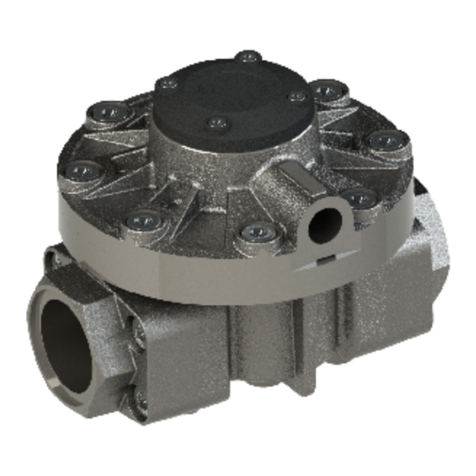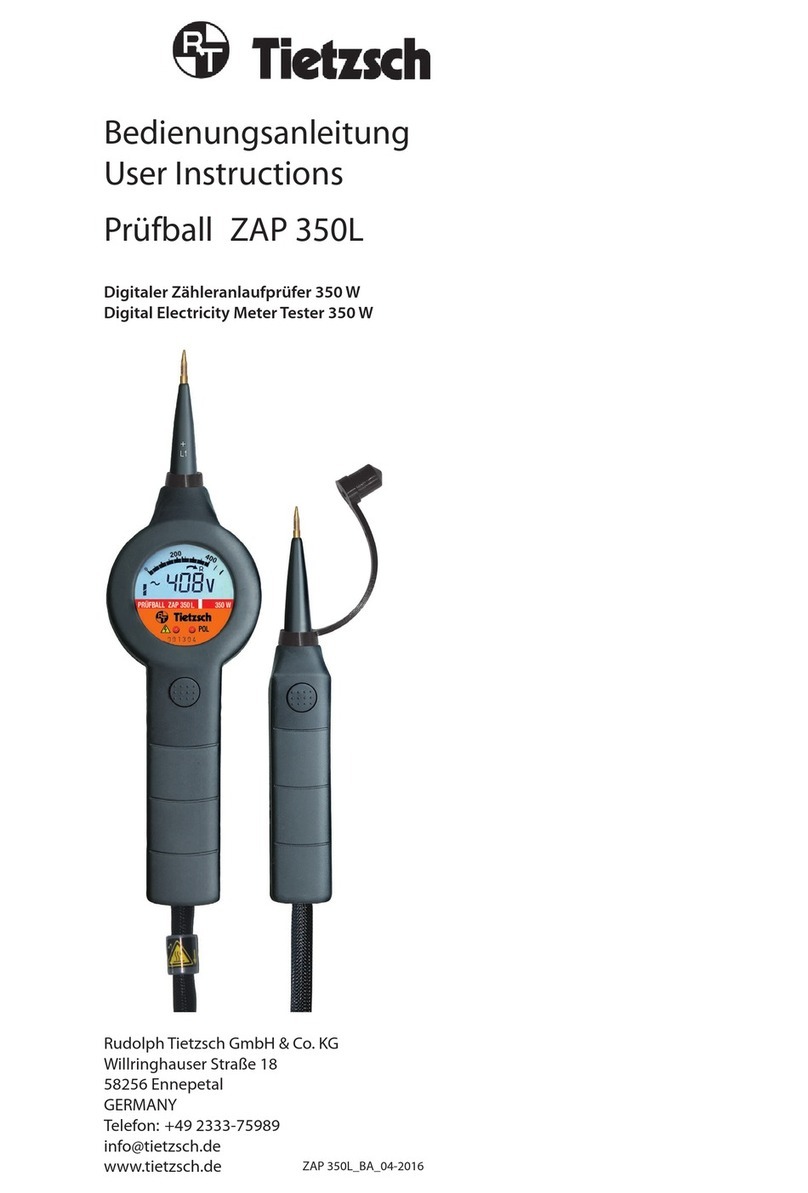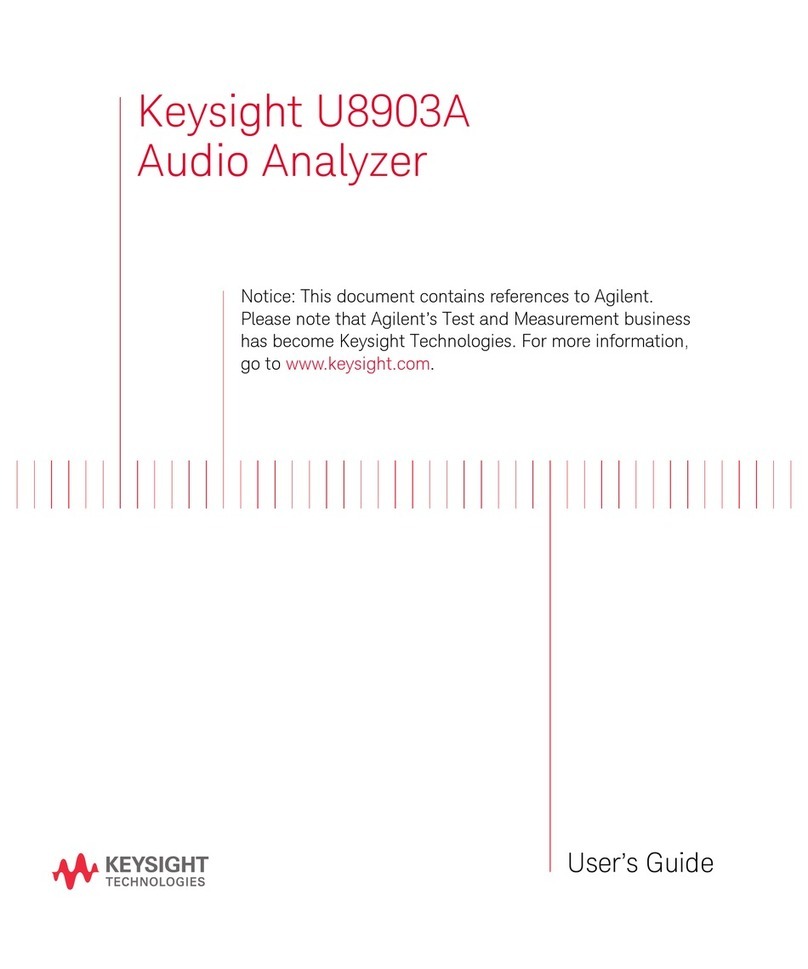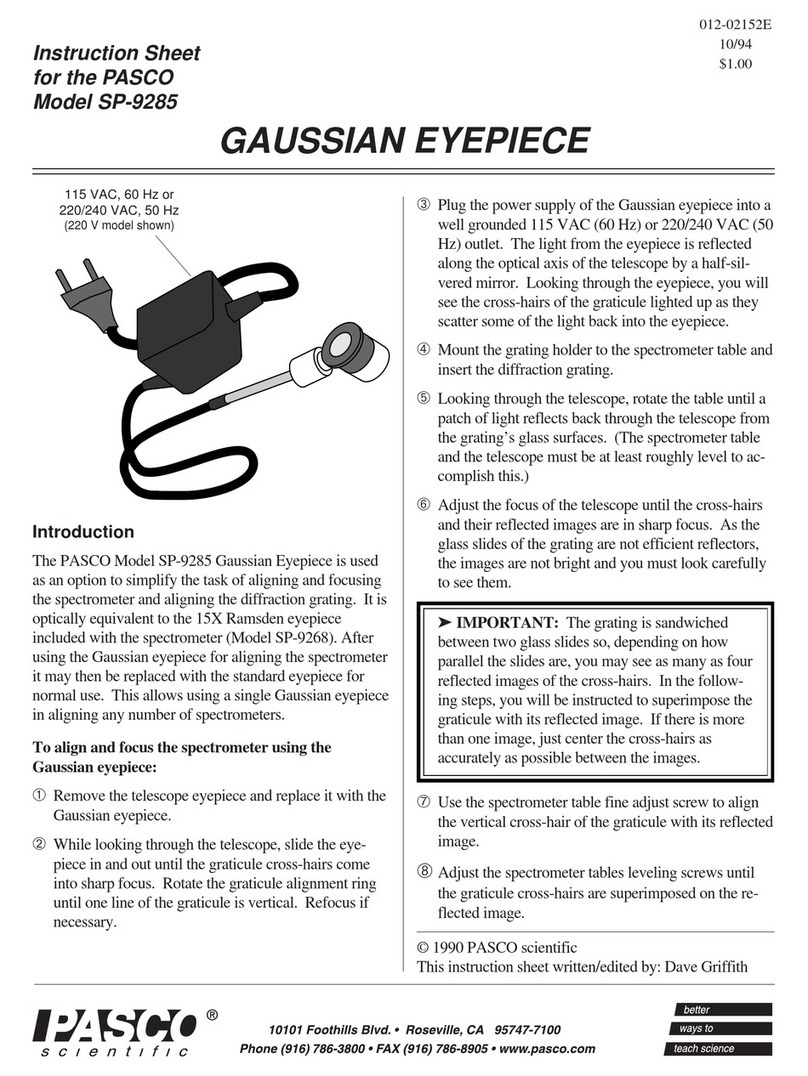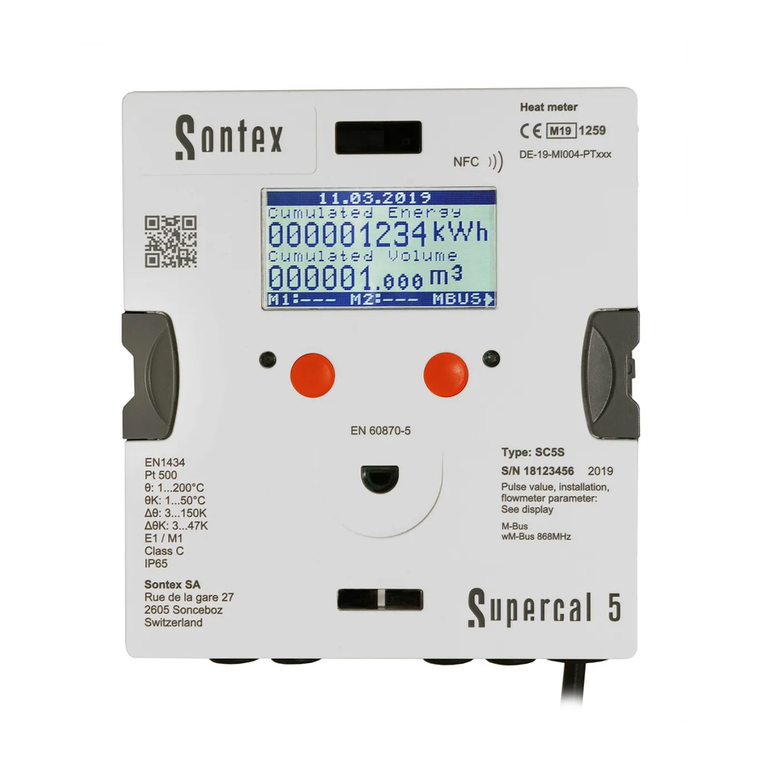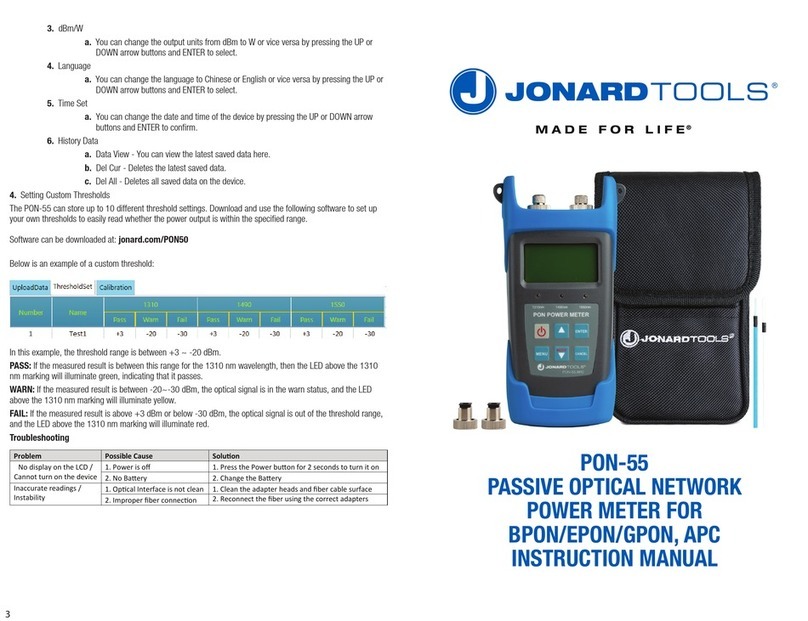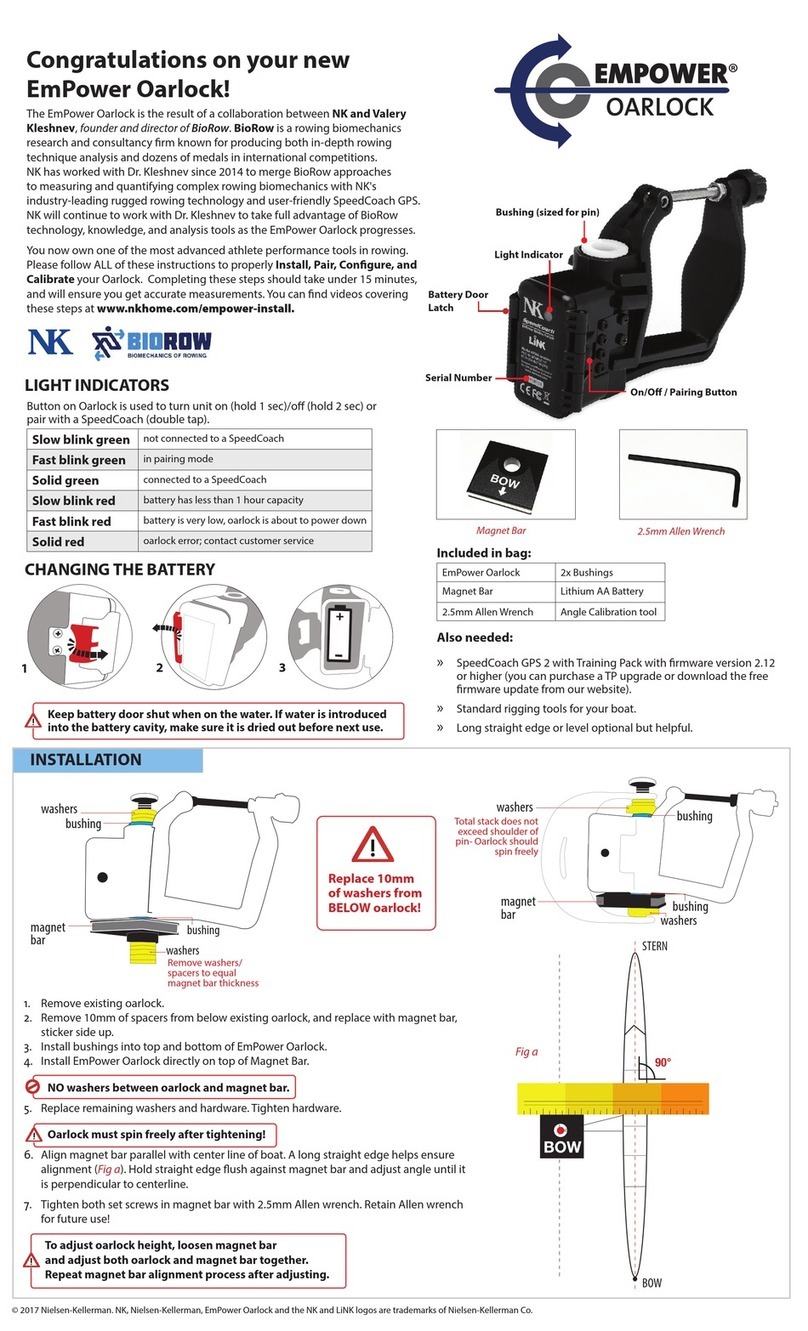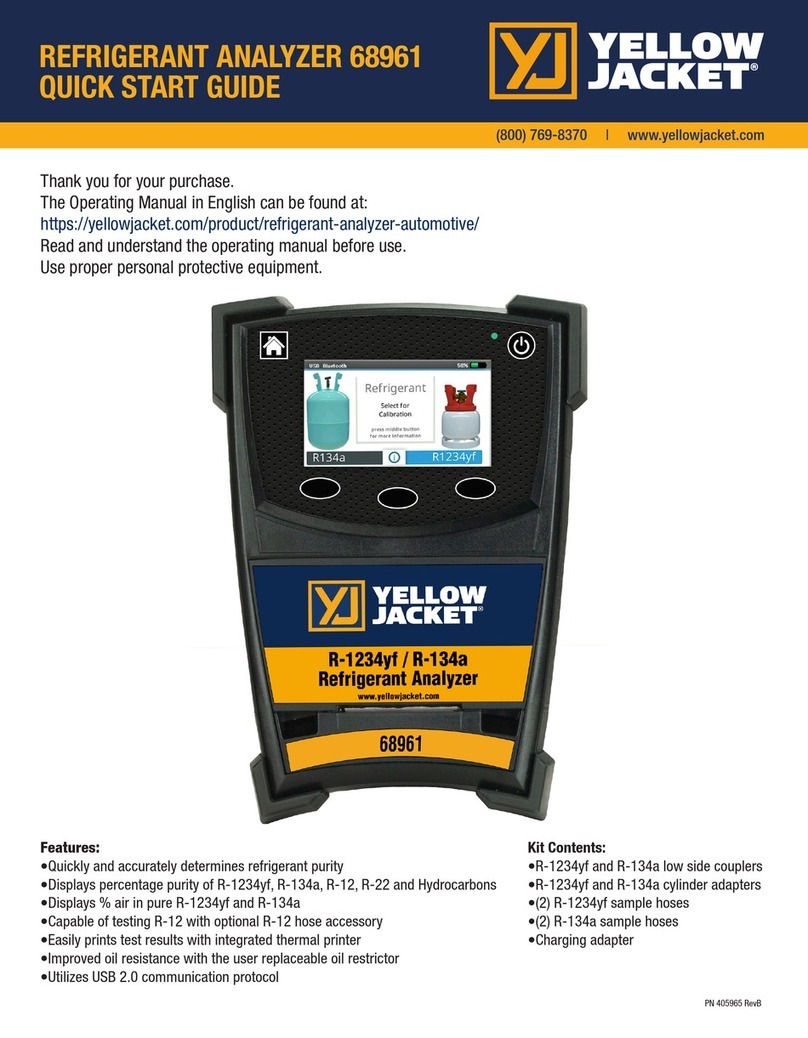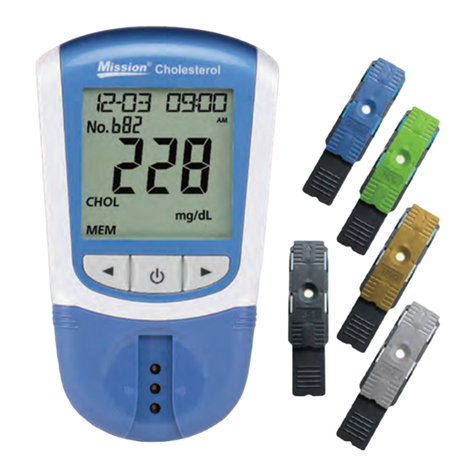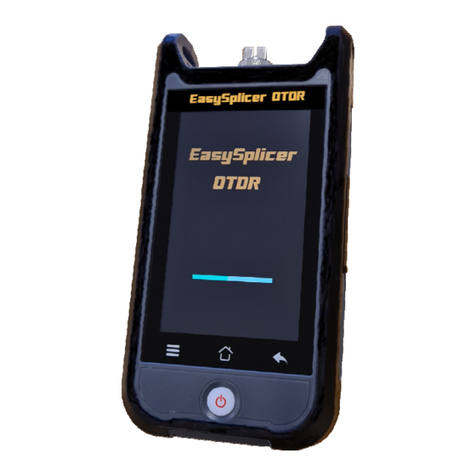TTI LD300 User manual

LD300
300W DC
Electronic Load
Service Manual
Book Part Number 48581-1360 Issue 1

Specification
Accuracy specifications apply for 18°C – 28ºC. Setting accuracies apply with slew rate control at
mid position and at 50W load power; regulation specifies variation at other powers.
INPUT
Maximum Input Ratings
Current: 80 Amps max. at rear panel terminals.
30 Amps max. at front panel terminals
Voltage: 80 Volts max. while conducting current.
Surge suppressors start to conduct at 120V (nominal),
Max. non-repetitive surge energy: 80 Joules.
Power: 320 Watts max. up to 28ºC, derating to 300 watts at 40ºC.
Reverse Polarity: Diode will conduct; 80 Amps max.
Off State Leakage: <10 mA, plus 680kΩsensing resistance.
Minimum Operating Voltage: 2V at 80A; typically 1V @ 40A, 0·5V @ 10A.
Isolation Voltage: ± 300Vdc max, either load input to chassis ground.
Input Terminals
Rear Panel Input: Safety terminals accepting 6mm diameter wire, 6mm plugs or 8mm
spades at 80 Amps max or 4mm plugs at 30 Amps max.
Front Panel Input: Safety terminals accepting 4mm diameter wire, 4mm plugs or 6·5mm
spades. 30 Amps max.
External Voltage Sense
Connection: Terminal block on rear panel. Slide switch to select between Internal
and External Voltage Sense.
Input Impedance: 680kΩeach input to load negative.
Max. Sense Voltage Drop: 6V.
OPERATING MODES
Constant Current Mode (CI)
Current Ranges: 0 to 8 A (1 mA resolution) and 0 to 80 A (10 mA resolution).
Setting Accuracy: ± (0·2% + 30 mA).
Regulation: < 30 mA for 90% load power change (V > 2 Volts).
Temperature Coefficient: < (0·02% + 5 mA) per ºC.
Slew Rate Ranges: 8 A range: <2·5 Amp per s to >250 Amp per ms.
80 A range: <25 Amp per s to >2500 Amp per ms.
Minimum transition time: 32 µs.
Constant Resistance Mode (CR)
Resistance Ranges: 0·04 to 10 Ω(0·01 Ωresolution); 2 to 400 Ω(0·1 Ωresolution).
Setting Accuracy: ± (0·5% + 2 digits + 30 mA).
Regulation: < 2% for 90% load power change (V > 2 Volts, using remote sense).
Temperature Coefficient: < (0·04% + 5 mA ) per ºC.
Slew Rate Ranges: 10 Ωrange: <1 Ωper s to 100 Ωper ms.
400 Ωrange: <400 Ωper s to 4000 Ωper ms.
Minimum transition time: 100 µs.
2

Constant Conductance Mode (CG)
Conductance Ranges: <0·01 to 1 A/V (1 mA/V resolution); <0·2 to 40 A/V (0·01 A/V
resolution).
Setting Accuracy: ± (0·5% + 2 digits + 30 mA).
Regulation: < 2% for 90% load power change (V > 2 Volts, using remote sense).
Temperature Coefficient: < (0·04% + 5 mA) per ºC.
Slew Rate Ranges: 1 A/V range: <0·1 A/V per s to >10 A/V per ms.
40 A/V range: <4 A/V per s to >400 A/V per ms.
Minimum transition time: 100 µs.
Constant Voltage Mode (CV)
Voltage Ranges: Vmin to 8 V (1 mV resolution) and Vmin to 80 V (10 mV resolution).
Vmin depends on current: typically <2V at 80A
Setting Accuracy: ± (0·2% + 2 digits).
Regulation: < 30 mV for 90% load power change (using remote sense).
Temperature Coefficient: < (0·02% + 1 mV) per ºC.
Slew Rate Ranges: 8 V range: <0·8 V per s to >80 V per ms.
80 V range: <8 V per s to >800 V per ms.
Minimum transition time: 100 µs.
Constant Power Mode (CP)
Power Range: 0 to 320 Watts.
Setting Accuracy: ± (0·5% + 2 W).
Regulation: < 2% over 5 V to 75 V source voltage change (using remote sense).
Temperature Coefficient: < 0·1% per ºC.
Slew Rate Ranges: <32 W per s to >3200 W ms.
Minimum transition time: 100 µs.
TRANSIENT CONTROL
Transient Generator
Pulse Repetition Rate: Adjustable from 0·1Hz to 10kHz in 3 overlapping ranges.
Pulse Duty Cycle: 1% to 99% (percentage of period at Level B).
Setting Accuracy: Frequency: ± 2% of range; Duty Cycle: +2%
Slew Rate Control
The slew rate control applies to all changes of level whether caused by manual selection, remote
control or the transient generator.
The level change is a linear slew between the two level settings with a slope determined by a
three-position range switch and a single turn control. Read-out is in the units of the mode
selected; the range available in each mode is shown above.
Setting Accuracy: ± 10% ± minimum transition time (levels within 10% to 90% or range).
Level Variation: ± 5 digits
3

Oscillator Sync Output
Connection: Terminal block on rear panel. Opto-isolated open collector output
conducts during Level B phase of internal transient generator.
Max Off State Voltage: 30V.
Collector Current: 2mA (typical).
DROPOUT VOLTAGE
The load will cease to conduct if the applied voltage falls below the Dropout Voltage setting;
active in all modes except Constant Voltage. The Dropout Voltage setting is also the threshold for
the Slow Start facility and acts as an offset voltage in Constant Resistance mode.
Setting Accuracy: ± 1% + 2 digits.
Slow Start
If the Slow Start switch is engaged, the load will not conduct any current until the source voltage
reaches the Dropout Voltage setting; it will then ramp up to the Level setting at a rate determined
by the settings of the Slew Rate controls.
METER SPECIFICATIONS
Display Type: Two 4-digit 14mm LED displays showing combinations of measured or
set-up values selected by a 5-position switch.
Illuminated annunciators display the measurement units.
Measured Values
Volts & Amps: Measured values of current through and voltage across the load.
Watt & Ohms: Power and equivalent load resistance, calculated from Volts and Amps.
Voltage Accuracy: ± 0·1% + 2 digits.
Current Accuracy: ± 0·2% + 3 digits.
Set-up Values
Level A & Level B: The two levels set by the front panel controls.
Frequency & Duty Cycle: The settings of the oscillator in the transient generator.
Slew Rate & Dropout V: Displays the slew rate setting and the value of the dropout voltage.
CURRENT MONITOR OUTPUT
Output Terminals: 4mm safety sockets on front panel or terminal block on rear panel.
Output Impedance: 600Ω.
Scaling: 50mV per Amp (4 Volts full scale).
Accuracy: ± 0·5%.
Common Mode Range: ± 3Vdc max. to input negative.
REMOTE CONTROL
External Control Input Characteristics
Connection: Terminal block on rear panel.
Input Impedance: 400kΩeach input to load negative.
Common Mode Range: ± 100V to load negative.
4

External Voltage Control
Operating Mode: The applied voltage determines the operating level within the
selected range.
Scaling: 4 Volts full scale.
Accuracy: ± 0·3% ± accuracy of selected range.
Common mode rejection: Better than –66dB.
External TTL Control
Operating Mode: The applied signal selects between Level A and Level B settings.
Threshold: + 1·5V nominal. A logic high selects Level B.
Remote Disable Input
Connection: Terminal block on rear panel.
Threshold: Apply +3 to +5 V to disable load input.
PROTECTION
Excess Current: The unit will trip into the fault state at nominally 92 Amps.
Excess Power: The unit will attempt to limit the power to approx 335 Watts; if this
fails the unit will trip into the fault state at about 360 Watts.
Excess Voltage: The unit will conduct a current pulse (to absorb inductively generated
spikes) for 1ms at 90V.
The unit will trip into the fault state at nominally 95V.
Surge suppressors will start to conduct above 120V.
Temperature: The unit will trip into the fault state if the heatsink temperature
exceeds safe levels.
Sense Error: The unit will trip into the fault state if the external voltage sense is
more than 6V below the internal sense.
Mode Switching: The unit will trip into the fault state if the mode is changed while the
input is enabled.
General
AC Input: 110V–120V or 220V–240V AC ±10%, 50/60Hz.
Installation Category II.
Power Consumption: 30VA max.
Operating Range: + 5ºC to + 40ºC, 20% to 80% RH.
Storage Range: – 40ºC to + 70ºC.
Environmental: Indoor use at altitudes up to 2000m, Pollution Degree 2.
Cooling: Dual 2-speed fans. Air exit at rear.
Safety: Complies with EN61010-1.
EMC: Complies with EN61326.
Size: 130mm H (3U) x 212mm W (½ rack) x 435mm L.
Weight: 6 kg.
Option: 19-inch rack mount kit.
5

Safety
This instrument is Safety Class I according to IEC classification and has been designed to meet
the requirements of EN61010−1 (Safety Requirements for Electrical Equipment for Measurement,
Control and Laboratory Use). It is an Installation Category II instrument intended for operation
from a normal single phase supply.
This instrument has been tested in accordance with EN61010−1 and has been supplied in a safe
condition. This instruction manual contains some information and warnings which have to be
followed by the user to ensure safe operation and to retain the instrument in a safe condition.
This instrument has been designed for indoor use in a Pollution Degree 2 environment in the
temperature range 5°C to 40°C, 20% −80% RH (non−condensing). It may occasionally be
subjected to temperatures between +5° and −10°C without degradation of its safety. Do not
operate while condensation is present.
Use of this instrument in a manner not specified by these instructions may impair the safety
protection provided. The unit does not have a fuse in the load circuit: ensure that the
maximum prospective fault current is limited to a safe level.
Do not operate the instrument outside its rated supply voltages or environmental range.
WARNING! THIS INSTRUMENT MUST BE EARTHED
Any interruption of the mains earth conductor inside or outside the instrument will make the
instrument dangerous. Intentional interruption is prohibited. The protective action must not be
negated by the use of an extension cord without a protective conductor.
When the instrument is connected to its supply, terminals may be live and opening the covers or
removal of parts (except those to which access can be gained by hand) is likely to expose live
parts. The apparatus shall be disconnected from all voltage sources before it is opened for any
adjustment, replacement, maintenance or repair.
Any adjustment, maintenance and repair of the opened instrument under voltage shall be avoided
as far as possible and, if inevitable, shall be carried out only by a skilled person who is aware of
the hazard involved.
If the instrument is clearly defective, has been subject to mechanical damage, excessive moisture
or chemical corrosion the safety protection may be impaired and the apparatus should be
withdrawn from use and returned for checking and repair.
The instrument contains both encapsulated fuses and a non-resetting thermal fuse; these are not
replaceable by the user. The short-circuiting of these protective devices is prohibited.
Do not wet the instrument when cleaning it.
The following symbols are used on the instrument and in this manual:−
Caution −refer to the accompanying documentation,
incorrect operation may damage the instrument.
Alternating Current.
mains supply OFF.
l mains supply ON.
6

Installation
Mains Operating Voltage
The operating voltage of the instrument is shown on the rear panel. Should it be necessary to
change the operating voltage from 230V to 115V or vice-versa, proceed as follows:
1. Disconnect the instrument from all voltage sources.
2. Remove the screws which hold the case upper to the chassis and lift off.
3. Turn the unit over and support the weight of the power supply PCB while removing the six
screws which hold it to the chassis. Leave the pillars attached to the PCB.
4. Fit the soldered links (alongside the transformer) for the required operating voltage:-
For 230V fit only LK1
For 115V fit LK2 and LK3 and not LK1
These links may be either tinned copper wire or zero-ohm resistors.
5. Refit the power supply PCB to the chassis, ensuring that no wires are trapped. Check that
all cables are correctly connected.
6. Refit the case upper.
7. To comply with safety standard requirements the operating voltage marked on the rear
panel must be changed to clearly show the new voltage setting.
Fuses
There are no user replaceable fuses in the instrument.
Mains Lead
When a three core mains lead with bare ends is provided it should be connected as follows:
Brown - Mains live
Blue - Mains Neutral
Green/Yellow - Earth
WARNING! THIS INSTRUMENT MUST BE EARTHED
Any interruption of the mains earth conductor inside or outside the instrument will make the
instrument dangerous. Intentional interruption is prohibited.
Mounting
This instrument is suitable both for bench use and rack mounting. It is delivered with feet for
bench mounting. The front feet include a tilt mechanism for optimal panel angle.
A rack kit for mounting one or two of these half-width 3U high units is available from the
Manufacturers or their overseas agents; a blanking piece is also available for unused positions in
the rack.
Ventilation
The unit is cooled by two 2-speed fans which vent at the rear. Take care not to restrict the air
inlets at the top, side and bottom panels or the exit at the rear. In rack-mounted situations allow
adequate space around the instrument and/or use a fan tray for forced cooling.
If ducting is applied to the air outlet, additional extraction is required.
7

Connections
Front Panel Connections
Load Input
The INPUT terminals for the load circuit on the front panel accept 4mm plugs into the end, 4mm
diameter wire or plugs into the cross hole, or ¼ inch spade connections (with a maximum blade
width of ½ inch). Their maximum current rating is 30 Amps. For higher currents (or lower circuit
resistance) use the rear panel terminals; do not use both simultaneously.
The load circuit is isolated from ground, and potentials up to ± 300 Volts to ground are allowed,
but it is essential to observe safe insulation practice.
Ensure that the source is connected with the correct polarity.
The maximum current through these terminals is 30 Amps.
The maximum voltage allowed across the load is 80 Volts.
The unit does not have a fuse in the load circuit: ensure that the maximum
prospective fault current is limited to a safe level.
Current Monitor Output
The Current Monitor terminals provide a voltage proportional to the load current flowing with a
scaling factor of 50 mV per Amp (4 Volts for 80 Amps full scale). The output impedance is 600Ω
and the calibration assumes a high impedance load.
A differential driver allows a common mode range of ± 3 Volts between the negative
monitor terminal and the negative load terminal. The output will be inaccurate (and the
unit may be damaged) if voltages exceeding this are applied.
Rear Panel Connections
Load Input
The INPUT terminals for the load circuit on the rear panel accept 4mm plugs into the end (4mm
plugs will only support 32 Amps), 6mm diameter wire or plugs into the cross hole or 8mm spade
connections (with a maximum blade width of 16mm).
The wiring and connection arrangement must be capable of supporting the current required; for
80 Amps, 16mm2cable is needed.
The load circuit is isolated from ground, and potentials up to ± 300 Volts to ground are allowed,
but it is essential to observe safe insulation practice.
Ensure that the source is connected with the correct polarity.
The maximum current through these terminals is 80 Amps.
The maximum voltage allowed across the load is 80 Volts.
The unit does not have a fuse in the load circuit: ensure that the maximum
prospective fault current is limited to a safe level.
Terminal Blocks
All other rear panel connections are made via the screw-less terminal blocks. To make
connections to the terminal blocks, use a flat screwdriver to press the spring-loaded orange
actuator inwards to open the wire clamp; insert the wire end fully into the hole and release the
actuator. Ensure the wire is properly gripped. Take care to observe the marked polarity.
Current Monitor Output
The top pair of terminals, marked CURRENT MONITOR, provide the current monitor output. They
are wired in parallel with the front panel sockets (see above).
8

Remote Control Input
The CONTROL VOLTAGE terminals are used in two operating modes of the instrument (as
selected by the front panel LEVEL CONTROL switch):
In EXTERNAL VOLTAGE mode an analogue signal applied here sets the level of the load;
the scaling is 4 Volts full scale.
In EXTERNAL TTL mode, a logic signal applied here selects either the LEVEL A setting
(logic low) or the LEVEL B setting (logic high). The switching threshold is nominally +1·5V.
These terminals will tolerate a common mode voltage of up to ±100 Volts relative to
the negative terminal of the load input. The input impedance is 400kΩfrom each
terminal to the load negative, so a common mode current will flow.
External Voltage Sense Input
To avoid errors in sensing the voltage of the source caused by voltage drops in the high current
wiring, connect the EXTERNAL SENSE terminals to the external circuit at the point where the
voltage needs to be measured (normally at the output terminals of the source under test). Move
the VOLTAGE SENSE SELECT slide switch to the EXT position.
Ensure that the source is connected with the correct polarity.
These terminals must not be connected to any voltage other than the source that is
connected to the load input.
Remote Disable Input
Apply +3V to +5V to the DISABLE INPUT terminals to disable the load input; they are the input to
an opto-coupler and are galvanically isolated from all other terminals. The input current is less
than 2·5mA at 5V. The INPUT ENABLE switch on the front panel must also be depressed for the
unit to operate.
Oscillator Sync Output
The SYNC OUTPUT is an open collector output of an opto-coupler driven by the signal from the
internal oscillator; it is galvanically isolated from all other terminals. A suitable pull-up resistor and
power supply (e.g. 4·7kΩto +5V) are needed to generate a usable signal, which could be used to
trigger an oscilloscope. There is a 1kΩseries protection resistor.
9

Dismantling Instructions and Servicing Notes
Service Handling Precautions
Service work or calibration should only be carried out by skilled engineers. Please note the
following points before commencing work.
Most of the integrated circuits are CMOS devices and care should be taken when handling to
avoid damage by static discharge. Most devices are also surface mounted miniature components
with very fine leads on small pitches. These components must be removed and replaced with
great care to avoid damage to the PCB. It is essential that only the proper tools and soldering
equipment as recommended for surface mount components are used.
Dismantling the Instrument
WARNING!
Disconnect the instrument from all voltage sources before it is opened for adjustment or repair.
If any adjustment or repair of the opened instrument is inevitable it shall be carried out only by a
skilled person who is aware of the hazards involved.
Remove the six screws retaining the top cover and lift off.
Control and Display PCBs
To give better access to the screws which retain the Control and Display PCBs the front panel
can be separated from the chassis by removing the four screws which secure it (two a the bottom
edge and one at each side). Pull off all the control knobs before attempting to remove the Control
PCB, noting the positions of the nylon spacers used on the shafts of the multi-turn potentiometers
(LEVEL A and LEVEL B).
Power Supply PCB
Note that the wires to the mains switch are clipped to the underside of the PCB; ensure that they
are not trapped by the pillars when replacing the board. If a regulator is replaced, ensure that
there is no gap between the clip-on heatsink and the tab of the device; this can happen if it is
pushed on too far. Check also that the heatsinks are not touching one another. Reconnect the
leads to both fans.
Main PCB
This can be removed from the chassis without removing the PSU PCB first. Take note of the
position of all the cable connections, especially the two connections to the front panel. The sense
connection from the load terminals is PJ13, the output to the Current Monitor sockets is PJ7 (on
the right). Ensure these wires are dressed away from the mains connections to the switch.
Power Wiring
Before dismantling the power stages, note the arrangement of the wiring. The cables between the
FETs and the rear panel terminals are 6mm2, those to the front terminals are 4mm2(as these are
only rated at 30 Amps). All these cables should be tri-rated (UL, CSA and EU) types. The internal
voltage sensing circuit is connected to the front terminals (if the load is connected to the rear
terminals there is no voltage drop across the internal wiring to the front).
All the crimp terminals are high conductivity (“Solistrand”) types – they should not be replaced by
the common plastic insulated types as their crimp force is insufficient and their resistance too
high.
10

Power Stages
The complete assembly of the two power stages and their heatsinks is attached to the chassis by
two screws accessible from underneath. Support the weight of the heatsinks while removing
them. It should then be possible to repair the assembly without detaching the power wiring from
the rear panel terminals. To detach a PCB and sense resistor assembly, remove the four screws
from the top terminals of the FET, the screw holding the thermistor to the heatsink and the screws
holding the sense resistor heatsink plate to the brackets. Retain these screws and washers for re-
use as their length is critical; screws supplied with a replacement FET may be too long.
If a FET needs to be replaced, note that a measured amount of high performance thermal
compound is used between it and the heatsink. Ordinary thermal grease is not adequate.
Before replacing the assembly, check carefully the condition of the low current wires to the main
PCB. Ensure that the grommets are correctly seated where the cables pass across the airflow
screen.
11

Circuit Description
In the following descriptions, items in bold are a cross reference to a section with that name.
System Overview
Although the load can operate in various modes – constant current, voltage, power, resistance or
conductance, it is fundamentally a constant current load. The other modes (all except constant
voltage) are implemented by measuring the value of the voltage across the load terminals and
using an analogue function multiplier (in some modes, as a divider) to calculate the magnitude
of the current required to satisfy the defined condition. For example, in constant conductance
mode I = V ×G where V is the instantaneous terminal voltage and G is a voltage (from the control
circuits) defining the value of conductance required.
The power is dissipated in two parallel FET power stages mounted on the heatsinks. These have
separate gate driver circuits (on the main PCB), and each has a current sense resistor in its
source which provides both local feedback to the gate driver and an input to the current sensing
circuit which controls the overall load accuracy.
There is a common control voltage input to the two gate drivers from the comparison amplifier,
which determines the overall magnitude of the load current. The local feedback from each sense
resistor to its gate driver provides a wideband control path, and matches the power dissipation in
the two FETs.
All control circuits in the unit are voltage controlled. The full-scale voltage FS (derived from the
internal reference) corresponds to a theoretical setting of (for example) 81·92 Amps; it is
nominally 2378mV. In practice, because of end-resistance in the control potentiometers, this
value cannot be reached, and the rated full-scale is 80 Amps, represented by nominally 2323mV.
In other modes the control voltage relates to the corresponding unit: to Ohms in constant
resistance mode, Watts in constant power mode, Siemens (Amps per Volt) in constant
conductance mode and Volts in constant voltage mode. In all modes except power, two ranges
are provided.
A feature of this load is its ability to test the transient performance of the user's supply by creating
load transients. These transients are changes between two preset levels, level A and level B, in
the level select circuit. A slew rate generator produces straight line transitions between these
two levels with a slope defined by the slew rate control settings. The interval between the
transitions can be controlled by an internal transient oscillator with adjustable frequency and
duty cycle, or by an external logic signal applied to the remote control input.
Under remote analogue control the user can generate any transients required by applying a
suitable waveform to the remote input. This waveform still passes through the slew rate generator
to impose a defined slew rate on the output waveform.
Another facility is Low-voltage Dropout, which makes the unit stop conducting current when the
terminal voltage falls below a level set by the user; this can be used to avoid over-discharge of
batteries. A related facility is slow start which makes the load current ramp up slowly to its final
value when enabled and ramp down slowly to zero when the unit is disabled.
There are a number of protection circuits within the unit, detecting excess power, current, voltage
or temperature. When any of these conditions arise a Fault Latch is set to prevent the unit
conducting current.
Note that the unit is designed so that the load input terminals are not grounded. The system 0V
line is tied to the negative terminal of the load input by connections to the FET PCBs. Be aware,
when taking measurements, of the possibility of voltage drops caused by heavy currents in the
load circuit wiring and avoid creating ground loops.
12

Fault Finding Hints
First check that the problem is not a stability issue caused by the characteristics of a particular
supply source. Note that instability caused by inductance in the load circuit can trip the over-
voltage protection. In other cases instability can trip the excess power detection circuit.
Constant Voltage mode is particularly likely to be affected by the characteristics of the supply
source. Its use in conjunction with electronic power supplies in “constant current” mode can be
very troublesome, as their output impedance varies considerably with frequency. The use of a
battery and a medium value non-inductive resistor is recommended.
Check if the fault is an incorrect value of DMD or PROD, or whether the demand is correct but the
power stages are not correctly implementing it. Fault finding should be conducted first in constant
current mode, from a simple voltage source such as a battery; the other modes cannot work if this
does not.
Note the possibility that only one power FET is conducting current; the unit will appear to operate
normally until the current fault trips at about 50 to 55 Amps.
Power Supply PCB
The power supply PCB generates four voltages (-12, -5, +5 and +12) for the analogue circuits,
and a separate 5V for the display. The two grounds are joined on the main PCB, not at the power
supply.
It also contains the two speed fan control circuit. Normally, base current is provided to Q3 from
R157 on the main PCB, so there is a low resistance between its collector and emitter which
shorts out R150 and R154 and makes the output voltages of IC39 and IC40 about ±8V. When the
power dissipated in the load (as measured by the power limit multiplier) exceeds about 240
Watts, the output of comparator IC58-B on the main PCB pulls R157 down to -5V, turning off Q3;
the output voltages rise to ±12V and the fans run at full speed.
Each supply has a protection fuse before the rectifier. The mains transformer has a thermal fuse
built-in; if this opens the whole transformer must be replaced, as its insulation will have been
damaged.
Display PCB
The displays are driven by a six phase multiplexing scheme – four for the digits in the 7-segment
displays and two for the other annunciator lamps. The display are common cathode; the anodes
are driven high by the CMOS latches IC2 & 3 and the cathodes are pulled low by transistors in
IC1. The 56Ωresistors define the current in each segment.
For each phase the processor first disables the outputs of the anode data latches IC2 & 3 by
setting OC high, successively loads the data into the two latches, then asserts the required digit
line and sets OC low for a measured time (400µs for digits, 800µs for annunciators) to obtain the
brightness required. The six phases repeat at 300 times per second.
Control PCB
The potentiometers on the control PCB generate voltages which are a proportion of the reference
voltage FS, to control the analogue circuits. The Level A, Level B and Dropout Voltage controls
have small negative voltages applied at their counter-clockwise end to ensure that they can be
adjusted down to zero.
The switches generate logic signals used to control transmission gates on the main PCB – there
are no dynamic signals on the control PCB. The coding of each switch is shown below. All logic is
5 volt CMOS; logic high is nearly 5V, logic low is close to 0V. Any logic signal at a mid level
indicates a fault. Signals from the control PCB are pulled high by 22k pull-ups on the main PCB
and pulled low by the switch contact.
13

Load Mode
The ten position Load Mode switch is encoded to a 4-bit binary code by priority encoder IC4. All
signals associated with this encoder are active low. The switch pulls one input line low and the
encoder produces the binary output corresponding to this input. Should a fault occur causing
more than one input to be low, the encoder will ignore all except the highest numbered one. See
the function multiplier section for a table describing how these signals are decoded on the main
PCB.
Independent signals from Control PCB:
IEN H = Input Enable requested.
SST H = Slow Start required.
FR1, FR0: Frequency range: HH = high range, HL = mid range, LH = low range, LL is not used.
SR1, SR0: Slew Rate range: HH = high range, HL = mid range, LH = low range, LL is not used.
Level Control Selection Signals:
SA: L = Select Level A.
SB: L = Select Level B.
SR: L = Select Remote Analogue Input.
ST: L = Use internal transient oscillator.
SE: L = Use the external remote control input as a logic signal to control transients.
Meters Selection Signals:
DAB: L = Display Level A and Level B settings.
DFD: L = Display Frequency and Duty Cycle settings.
DSX: L = Display Slew Rate and Dropout Voltage settings.
DWR: L = Display actual Watts and Ohms values.
(None:) All H = Display actual Volts and Amps values.
Analogue Signals on the Control PCB:
FS Full Scale (from main PCB to controls).
LVLO Level low (a slightly negative voltage from the main PCB to the bottom of the level A
and B pots).
LVA Level A setting.
LVB Level B setting.
XOLO Dropout Low (a slightly negative voltage from the main PCB to the bottom of the
dropout pot).
OFFV Dropout Voltage setting.
FRQV Frequency control voltage.
SLWV Slew Rate control voltage.
DTYV Duty Cycle control voltage.
14

Main PCB
Two sets of four-pin test points give access to the most important signals on the board: TP2 has
FS, IFB, VS and 0V while TP3 has PROD, REMV, DMD and 0V. TP1 has the internal oscillator
signal (when it is in use).
Voltage Sensing
The internal (IC19) and external (IC32) voltage sense amplifiers are very similar. Each is a fully
differential circuit to reject common mode influences and has a gain of 20/680 to provide an
output scaling of 2353mV at 80 Volts. The accuracy of the offset null adjustments on these
amplifiers is critical for the accuracy of the unit at low voltages in constant power, resistance and
conductance modes. SW2 (on the back panel) selects the required signal for the Voltage
Feedback signal VFB and the Voltage Sense signal VS (which are virtually identical).
C106 & C107 provide high frequency coupling from the internal sense connection onto the
external sense signals to reduce the effect of long external sense connections on the stability and
high frequency behaviour of the unit.
The external sense circuit is designed to allow the use of backing-off batteries to extend the
performance capabilities of the load down to zero volts. Comparator IC46-A monitors the
difference between the two sense voltages and trips the fault latch if it exceeds about 8 volts.
The internal voltage sense signal VINT (which reflects the actual terminal voltage) is always used
to check the power dissipation and voltage fault conditions.
Comparator IC46-C has a threshold equivalent to 87·5 volts and triggers the transient over-
voltage clamp circuit Q9 (which is part of the comparison amplifier). This circuit is designed to
clamp the terminal voltage and absorb energy from small inductances in the load circuit. If the
energy involved is excessive it will cause the power limit multiplier to trip the fault latch.
Comparator IC46-D has a threshold equivalent to 96 volts and trips the fault latch to protect the
unit against excessive voltages. This does not prevent the terminal voltage being applied to the
FETs, but it ensures that they are not conducting. There are also Varistors across the FETs, which
will start to conduct (at typically 120V) to absorb transient energy; these are not intended to
conduct continuously, and will be destroyed if excessive DC voltage is applied.
Current Sensing
The current is monitored by two 5mΩ4-terminal resistors in the FET sources. To obtain the
required accuracy IC22 is used in a differential configuration to sum the voltages across the
sense terminals of the two resistors and disregard any common mode voltages. It provides a gain
of 3000/510 from each input, so its output voltage is nominally 2353mV at 80 Amps (40 Amps in
each FET); this is the signal IFB. The accuracy of the offset null adjustment of this amplifier
(VR12) greatly affects the accuracy of the unit at low currents. The voltage across each sense
resistor is also separately used by the differential feedback input of each gate driver IC21 and
IC30.
Current Monitor Output
To avoid difficulties with ground loops, the current monitor output is driven by a circuit designed to
provide an accurate voltage between the terminals regardless of common mode voltages applied
at the outputs (within the working range of the circuit – about ±3 V). In essence IC45-B is a
current source and IC45-A is a current sink, combining to pass a current through R128 (and its
parallel trimmer) to develop the required output voltage. The nominal output impedance is 600Ω;
VR26 adjusts this to calibrate exactly the required gain to obtain the output scaling of 4V at 80
Amps.
Because of the cross-coupled nature of this circuit, almost any fault will make it saturate, so fault
finding is best done by inspection.
15

Remote Control
The external remote control voltage is applied to the unity gain instrumentation amplifier IC38
which removes the common mode component (up to ±100V is allowed). VR31 provides offset
adjustment. The analogue control range is 4·00V for nominal range (80 Amps etc.).
For External TTL mode (when the user applies a logic signal the remote input), IC20-A compares
the input voltage to the logic threshold of 1·5V and generates the corresponding digital signal
XOSC which is used to switch between the Level A and Level B settings in the level select
circuit.
A Remote Disable input is also provided. A logic high signal applied here causes enough current
in the LED of the opto-isolator IC34 to turn on its output transistor and pull down the input enable
signal IEN, preventing the load from being enabled.
Reference Voltage
IC55 produces a nominal 3·3V reference voltage which is reduced by VR30 to nominally 2378mV
and buffered by IC54 to the signal FS, which sets the Full Scale value of the front panel controls.
VR30 is adjusted so that the internal full-scale voltage exactly matches that produced at the
junction of R232 and R233 by a remote control input voltage of 4·096V (corresponding to 81·92
Amps etc.).
Transient Oscillator
The oscillator is a triangle wave generator based on integrating a constant current from the output
of IC17 into a timing capacitor. Three frequency ranges are provided and switched by IC6
according to the two FR signals. The amplitude of the triangle wave is about 2·23Vpp, determined
by the two threshold voltages set by R32 – R34 (about 75mV above 0V and 75mV below FS).
R39, Q2 and IC12-A convert the scaled frequency control voltage (after a calibration adjustment
for each range) to a bias current for the OTA IC17. The output current from this charges and
discharges the timing capacitor C35 (and C17 or C18 on the lower ranges). The voltage on this
capacitor is buffered by IC12-B.
The oscillator is synchronised to the assertion of IEN by the signal OSCGO (from the input
enable logic). When the oscillator is not required OSCGO is low and IC11-C holds the voltage on
the timing capacitor at FS. The output of IC10-B is low and IC11-A selects the low threshold.
When IEN goes high (and the slow start requirement is satisfied, so STRT is also high) OSCGO
goes high and releases the timing capacitor, which is then discharged by IC17 until its voltage
reaches the low triangle threshold and IC10-B changes state. The high triangle threshold is then
selected and the capacitor charges up until this threshold is reached when the cycle repeats.
A logic signal IOSC of the required duty cycle is produced by IC10-A, which compares the voltage
of the triangle wave to the scaled DTYV voltage buffered by IC14-B. When IOSC is low the level
select circuit passes LVLB to the slew rate generator; when it is high, LVLA passes through.
Level Select Circuit
IC7 passes one of four control levels through to the slew rate generator: LVLA, LVLB, REMV or
zero, as determined by the signals at its control inputs from IC8. The two sections of IC7 are in
parallel to minimise resistance.
REMV is scaled by R232 & R233 from 4·000 V to 2·323 V at rated maximum value (80 Amps
etc.).
The selection signals produced by IC8 are determined by the highest numbered of its inputs that
is asserted low. The state of all lower priority inputs is ignored, so overriding control is in the
following order:
16

When STRT (from the slow start logic) is low, B3 and B0 are both low and IC7 selects 0V.
When SR (“select Remote” from the Control PCB) is low, B3 is low and B0 high and IC7 selects
REMV.
When SB (“select Level B” from the Control PCB) is low, B3 is high and B0 low and IC7 selects
LVLB.
When SA (“select Level A” from the Control PCB) is low, B3 and B0 are both high and IC7
selects LVLA.
When ST (“select Transient Mode” from the Control PCB) is low, B3 is high and B0 follows the
state of IOSC; when this is high IC7 selects LVLA and when low IC7 selects LVLB.
When all of the above signals are high (which occurs when External TTL mode is selected), B3 is
high and B0 follows the state of XOSC from the comparator IC20. When the remote input is below
1·5V, XOSC is high and IC7 selects LVLA; when it is above 1·5V, XOSC is low and IC7 selects
LVLB.
Slew Rate Generator
This circuit produces straight line transitions between any changes of level, rather than the
exponential transitions which would be produced by a CR network. It applies to all changes of
level, whether determined by the transient oscillator or any other cause. It operates by using a
controlled constant current to charge and discharge a capacitor to the required levels.
There are two sets of three slew rate ranges; one set is used in Current mode, the second
(slower) set is used in all other modes. IC4 selects the capacitor for each range and IC3 selects a
fraction of the control setting SLWV through a separate calibration adjustment for each range.
R38, Q1 and IC14-A convert this setting into a bias current for the OTA IC16. This compares the
selected level from IC7 with the value currently stored on the capacitor, and charges or
discharges the capacitor at a rate determined by its bias current, until the two are equal. The
accuracy of this match depends on the input offset voltage of IC16, which varies with bias current
(especially at low values), so the unit is calibrated with the slew rate control at its physical centre
(a position that the user can easily establish).
IC13 presents a high impedance load to the capacitor and drives DMD with a small gain, so the
scaling becomes 2392mV at the rated top of range (80 Amps etc.) – the subsequent calibration
potentiometers reduce this to match the exact scaling of IFB and VFB. Depending on operating
mode, DMD drives either the comparison amplifier or the function multiplier.
Function Multiplier
In the derived operating modes, the function multiplier is used to compute the required current (at
PROD) from the instantaneous terminal voltage (at VFB) and the present control level setting (at
DMD).
In constant power mode I = W÷V.
In constant conductance mode I = V*G
In constant resistance mode, I = V÷R.
In fact, in constant resistance mode, the voltage value used by the multiplier is actually VFB +
VXO. VXO is the negative of VROP, so the equation is effectively I = (VFB-VDROP) ÷R. When
VFB is less than VDROP the multiplier simply cuts off with the PROD output at zero. The user
can set VDROP to zero, to obtain a simple resistor where I = VFB÷R.
The transistors in IC18, in conjunction with the associated op-amps IC24 and IC25, form a
standard log-antilog analogue multiplier-divider. IC25-B adjusts the base-emitter voltage of
transistor IC18-B until its collector current equals the current through R73 (the first multiplication
input). IC24-A does the same with IC18-C to match the sum of the currents in R78 & R80 (the
second multiplication input). The base-emitter voltage across the output transistor IC18-D is the
sum of these two voltages (which represent the logarithms of their input values), less the voltage
developed by IC25-A across IC18-A (which represents the logarithm of the division input current
17

through R68). Adding and subtracting logarithms is equivalent to multiplying and dividing the
original values, so the collector current of IC18-D is proportional to the product of product of the
two multiplication inputs, divided by the division input. IC24-B converts this current to a voltage
across R82 to create the PROD output. The transmission gates route the analogue signals to the
appropriate resistors to produce the mathematical function needed for each mode. A calibration
value is always applied to the third input.
VR23 adjusts the input offset of the voltage channel; VR35 adjusts the output to exactly zero
when either multiplication input is zero. These adjustments are critical for accurate operation of
the unit at low voltages or high resistance respectively.
This following table lists the state of the various routing signals which are derived from the
operating mode code (from the control PCB), the function implemented in the multiplier (if it is
used), and the relevant calibration adjustment. Note that LM0 selects the range within each
mode, and determines (together with the two signals AR2 and AR1) the routes through IC42 and
44 to the inputs of the comparison amplifier. AR2 is low in Power and Voltage modes, AR1 is
low in Power and Current modes; the table lists the selected input of IC42 and 44.
Mode LM[3...0] Asserted Function Adjustment AR IC42&44
8 Amps LHH H VR34 HL Y5
80 Amps LHH L VR25 HL Y4
320 Watts HHH L W, GandW PROD = DMD * VR27 VFB VR27 LL Y0
8 Volts HHL H VR32 LH Y3
80 Volts HHL L VR38 LH Y2
10 Ohms HLH H R10, R PROD = VR16 * (VFB+VXO) DMD VR16 HH Y7
400 Ohms HLH L R400, R PROD = VR17 * (VFB+VXO) DMD VR17 HH Y6
1 A/V HLL H G1, GandW PROD = VFB * DMD VR14 VR14 HH Y7
40 A/V HLL L G40, GandW PROD = VFB * DMD VR15 VR15 HH Y6
Comparison Amplifier
IC43 is the point in the system where the main feedback action occurs. Depending on the
selected operating mode, one of its inputs is connected to the required demand signal and its
other input is connected to the corresponding measured feedback signal. Its output passes to the
gate drivers and defines the current that is required to be conducted by the FET power stages.
R124:123 and R137:136 scale its output from about 2·37 volts at 80 Amps to the 200mV required
by the gate drivers (which is determined by the 5mΩshunts).
Q6 and Q7 are clamps which protect the gate drivers from gross overdrive: Q6 prevents the
output of IC43 going more negative than one diode drop below ground; while Q7 prevents it rising
more positive than about 3 Volts.
IC26-B switches in the bandwidth limiting network C165 & R259 on the slowest slew rate range.
C51 & R164 are a stabilisation network which operates in conjunction with the source impedance
set by the resistors at the inputs to IC42, which depends on the operating mode.
In all modes except voltage mode, IC43 acts as a normal non-inverting feedback amplifier: IC44
passes the required current value from DMD (via current mode calibration adjustments) or PROD
to the positive input, while IC42 routes the current feedback signal IFB to the negative input. By
normal feedback loop action, IC43 produces whatever output is needed into the gate drivers to
cause IFB to match the demanded value. Overall accuracy depends on the current sense
amplifier IC22, not on the local feedback in each FET stage.
18

In voltage mode the system works differently – IC43 acts as an error integrator. Its output
changes to adjust the conductivity of the FETs, in turn changing the current drawn through the
source impedance of the user's supply, until the terminal voltage matches the required value.
Because the FETs invert, the connections to IC43 appear reversed – the required voltage is
applied to its negative input and the voltage feedback signal is applied to positive input. The gain
of the feedback loop is extremely high, and is critically dependent on the nature and magnitude of
the user's source impedance, which provides the drain load for the FETs, and determines the
stability of the overall system.
Output Enable
Over-riding control of FET stage conduction is provided by the DRIVE signal from the input
enable and fault logic. When DRIVE is low, Q8 turns on and makes all the transmission gates in
IC42 and 44 open circuit by setting their E input high. IC43 has its positive input pulled to ground
by Q14, while R274 sources current through D22 onto its negative input and causes its output to
go negative until Q7 turns on (at about -0·7V) to conduct this current. The outputs of the gate
drivers IC21 & 30 also go negative (until D2 and D3 conduct) and the FETs are completely turned
off. The unit cannot conduct any load current from the user's source while DRIVE is low.
The power limit and low voltage dropout circuits operate by pulling down the positive input of
the comparison amplifier through Q4 and Q5 respectively.
Power Limit Multiplier
This is another log-antilog analogue multiplier, using the transistors in IC27 and the op-amps IC28
and IC29. The principle of its operation is the same as the function multiplier described above.
IC28-A adjusts the base-emitter voltage of transistor IC27-A until its collector current equals the
current from VINT through R100. IC29-A does the same with IC27-D to match the current
proportional to IFB through R107. IC27-B carries a scaling current from R95. Therefore the
collector current of IC27-C is proportional to the product of VINT and IFB, divided by a calibration
value set by VR18. IC29-B converts this current to a voltage across R109 that is proportional to
the power being dissipated in the load.
R214 provides an offset below ground equivalent to the protection threshold, approximately 340
Watts. When the power exceeds this level, D16 conducts the current into R109 so the output of
IC29-B is about 0·7V above ground. This starts to turn on Q4, which acts as a variable resistor
and reduces the demand level at the input of the comparison amplifier by causing a voltage
drop across R230; this additional feedback mechanism attempts to control the power in the load
at this limiting threshold. The positive voltage at PLIM turns on Q11, which pulls down WARN,
and makes the panel lamp show orange by driving both RED and GRN.
If the limiting action fails, and the power continues to rise, eventually (at about 360 Watts) the
voltage passes the threshold of comparator IC58-A and the fault latch is tripped.
Low Voltage Dropout
The control signal OFFV from the front panel passes through IC48-C, which disconnects it from
the internal signal DROPV in voltage mode (the facility is redundant in that mode, as the load
does not conduct below the set voltage anyway). DROPV is used by the slow start comparator
IC46-B. When the control is fully counter-clockwise (perceived by the user as zero) XOLO
provides a small negative voltage at DROPV to ensure that the output of this comparator is high
even when VS is 0V.
IC23-A inverts DROPV to produce a corresponding negative voltage at VXO; R263 provides
slightly over unity gain, to match the scaling of the voltage sense signal VS. Normally D7
conducts the output signal, but when DROPV goes negative (because the control is at zero) then
D8 conducts (holding the amplifier output at +0·7V) and D7 turns off to allow R264 to hold VXO at
exactly 0V. VXO is also used by the function multiplier in resistance mode.
19
Table of contents
Other TTI Measuring Instrument manuals

